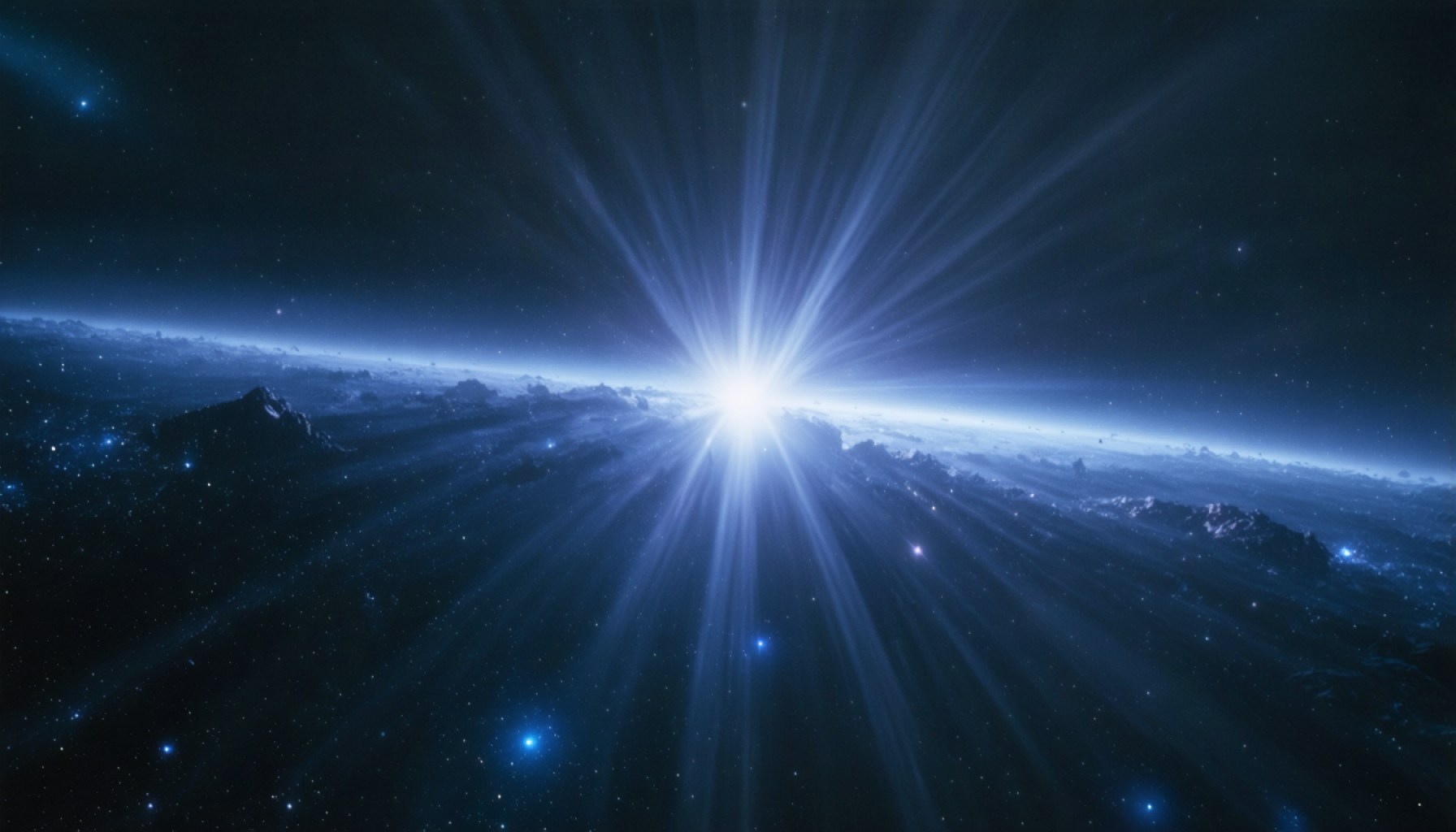- Asteroid 2024 YR4, potentially colliding with Earth in 2032, has a rising collision likelihood of over 2%.
- Estimated at 40 to 90 meters in diameter, the asteroid could cause substantial damage upon impact.
- The anticipated close approach is on December 22, 2032, but trajectory predictions remain uncertain.
- Tracking 2024 YR4 grows difficult as its visibility decreases, with recovery possible only by mid-2028.
- Space agencies worldwide, including JAXA, emphasize the importance of precision in altering its course.
- International collaboration underscores the need to protect Earth from cosmic threats.
In the vast tapestry of space, a celestial drama unfolds as astronomers worldwide keep a vigilant eye on a cosmic wanderer known as Asteroid 2024 YR4. The intrigue surrounding this rocky visitor stems from its potential to collide with Earth in 2032, a prospect that has seen its likelihood rise above 2% in recent updates from U.S. and European space agencies.
This asteroid, discovered at the close of last year, presents a conundrum wrapped in uncertainty. It possesses a formidable size, estimated between 40 and 90 meters in diameter, making it capable of inflicting significant damage should it decide to turn Earthward. The projected encounter on December 22, 2032, keeps astronomers on the edge of their seats, as the accuracy of its trajectory remains elusive.
The quest for clarity grows increasingly urgent, as 2024 YR4 retreats into the darkness beyond Earth’s gaze, its brightness dimming to demanding levels. Only powerful telescopes can now capture its faint signature against the backdrop of the cosmos, a challenge that will intensify as it slips beyond reach this spring, with recovery efforts not feasible until mid-2028.
Yet, hope persists. Voices from space organizations, like those at Japan’s space agency JAXA, advocate for calm and perseverance. In the realm of orbital dynamics, precision is key. Accurate calculations could potentially eliminate the threat, turning today’s 2% into a reassuring 0%. This international endeavor to shield Earth emphasizes a universal truth: united, we stand a better chance of steering our planet clear of celestial harm.
Asteroid Alert: Can We Deflect the Threat of 2024 YR4?
How-To Steps & Life Hacks
Protecting Earth from Asteroids: A Step-by-Step Approach
1. Early Detection: The first line of defense is early detection. Advanced telescopes and surveillance networks, such as NASA’s Planetary Defense Coordination Office, play a crucial role in identifying potential threats like 2024 YR4.
2. Trajectory Calculation: Use powerful computing models to predict the asteroid’s path accurately. This includes accounting for gravitational influences from other celestial bodies that may alter its course.
3. Mitigation Plans: Develop potential mitigation strategies. These may include kinetic impactors to nudge the asteroid off course or nuclear devices to fracture it, making it less dangerous.
4. International Collaboration: Encourage cooperation among global space agencies (e.g., NASA, ESA, JAXA) to share data and resources. Unified efforts can turn a high-risk situation into a manageable one.
Real-World Use Cases
Near-Earth Object (NEO) Tracking Programs
Programs like NASA’s Near-Earth Object Observations (NEOO) and ESA’s Space Situational Awareness (SSA) are critical in tracking asteroids. Both agencies contribute to a global database, helping to assess collision risks and coordinate response strategies.
Market Forecasts & Industry Trends
Rise in Funding for Space Defense
The potential collision with 2024 YR4 mirrors growing trends in funding for space defense technologies. According to a report by Business Wire, the global space situational awareness market is projected to grow at a CAGR of 8.6% from 2023 to 2028, reflecting increased government investment.
Reviews & Comparisons
Asteroid Deflection Missions: A Side-by-Side Analysis
– NASA’s DART Mission: First kinetic impactor test mission to alter the motion of an asteroid’s moonlet.
– ESA’s Hera Mission: Scheduled to observe the effects of the DART impact, offering a complementary, in-depth analysis of its efficacy.
Controversies & Limitations
Technological and Ethical Challenges
One controversy involves the technological uncertainty of deflection missions and their secondary effects. A miscalculation could potentially create multiple fragments, complicating the problem. Ethical concerns also arise regarding controlling asteroids, as alteration attempts need to ensure no harm to another celestial body or planet.
Features, Specs & Pricing
Asteroid Observation Technologies
– James Webb Space Telescope (JWST): Offers unrivaled infrared capabilities, crucial for observing dim and cold objects like 2024 YR4.
– Large Synoptic Survey Telescope (LSST): Expected to play a significant role in mapping the trajectory of asteroids efficiently.
Security & Sustainability
Ensuring Peaceful Space Endeavors
The UN Committee on the Peaceful Uses of Outer Space (COPUOS) works to ensure that asteroid deflection techniques are used solely for defensive, non-aggressive purposes.
Insights & Predictions
Future of Planetary Defense
As the space industry evolves, it’s likely we’ll see significant advancements in asteroid deflection technologies. Experts predict autonomous robotic interceptors could become feasible tools by the 2030s, enhancing Earth’s planetary defense arsenal.
Tutorials & Compatibility
Learning Orbital Mechanics
Understanding orbital dynamics can be facilitated through MOOCs from platforms like Coursera or edX, which offer courses on astrophysics and space sciences.
Pros & Cons Overview
Pros: Early detection systems can save lives and infrastructure by averting asteroid impacts. Global collaboration strengthens scientific ties.
Cons: Costs are substantial, and the technology is still being developed, challenging the prediction accuracy and deployment readiness.
Actionable Recommendations
1. Stay Informed: Regularly check updates from trusted sources like NASA and ESA for the latest developments on asteroids.
2. Support Science: Advocate for funding initiatives focused on space exploration and defense.
3. Educate Yourself & Others: Spread awareness about the importance of planetary defense in safeguarding Earth.
To learn more about space exploration and defense initiatives, visit [NASA](https://www.nasa.gov).
In summary, while 2024 YR4 poses a significant threat, a blend of technological innovation, strategic planning, and global cooperation could mitigate its potential impact. By staying informed and engaged, everyone can contribute to planetary defense efforts.
